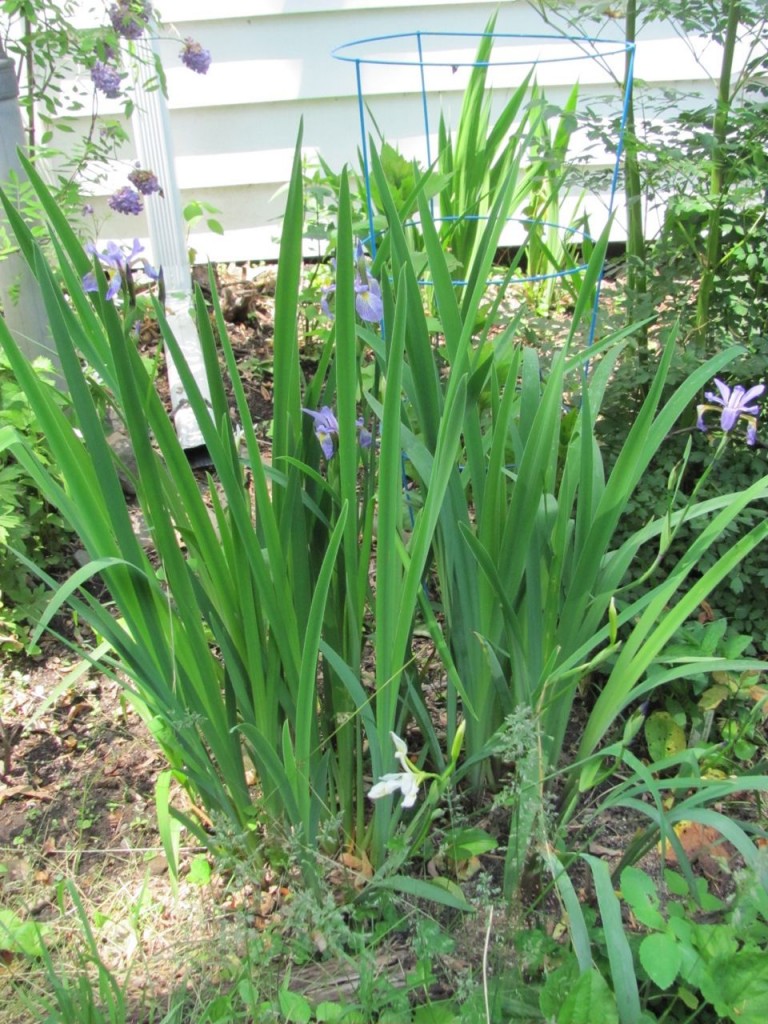Today, April 11, 2023 on a late afternoon walk. We lamented on how quickly the spring ephemerals will wither away. Seeing them so vibrant and fresh is almost heartbreaking knowing that they will be gone so soon.
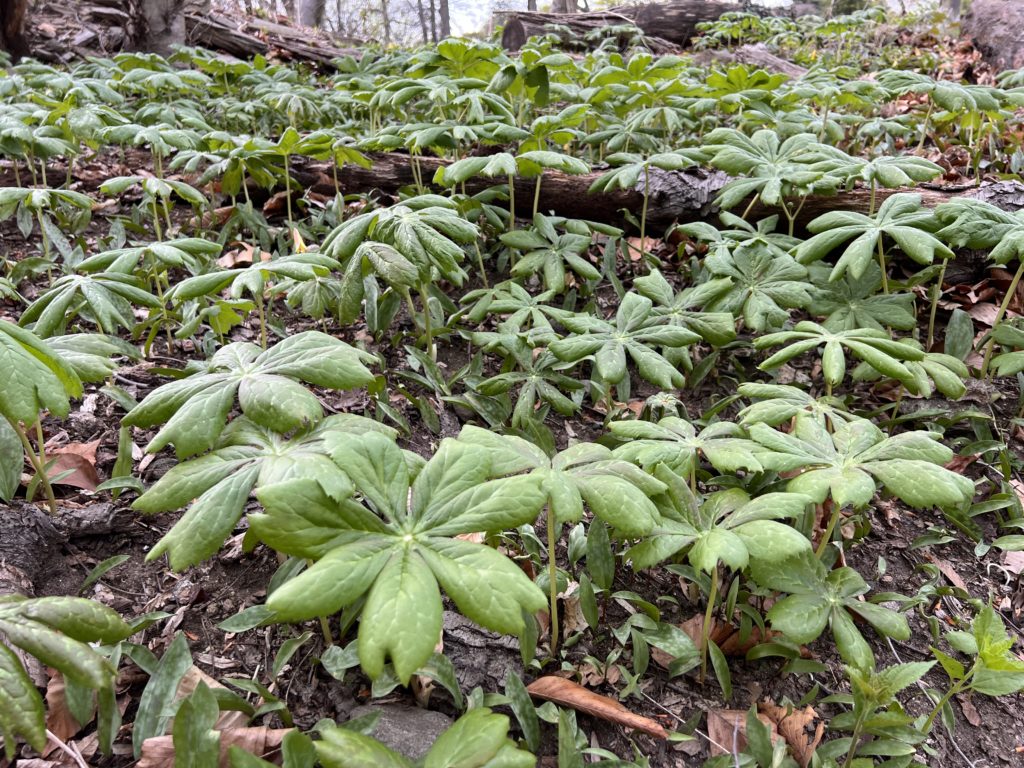
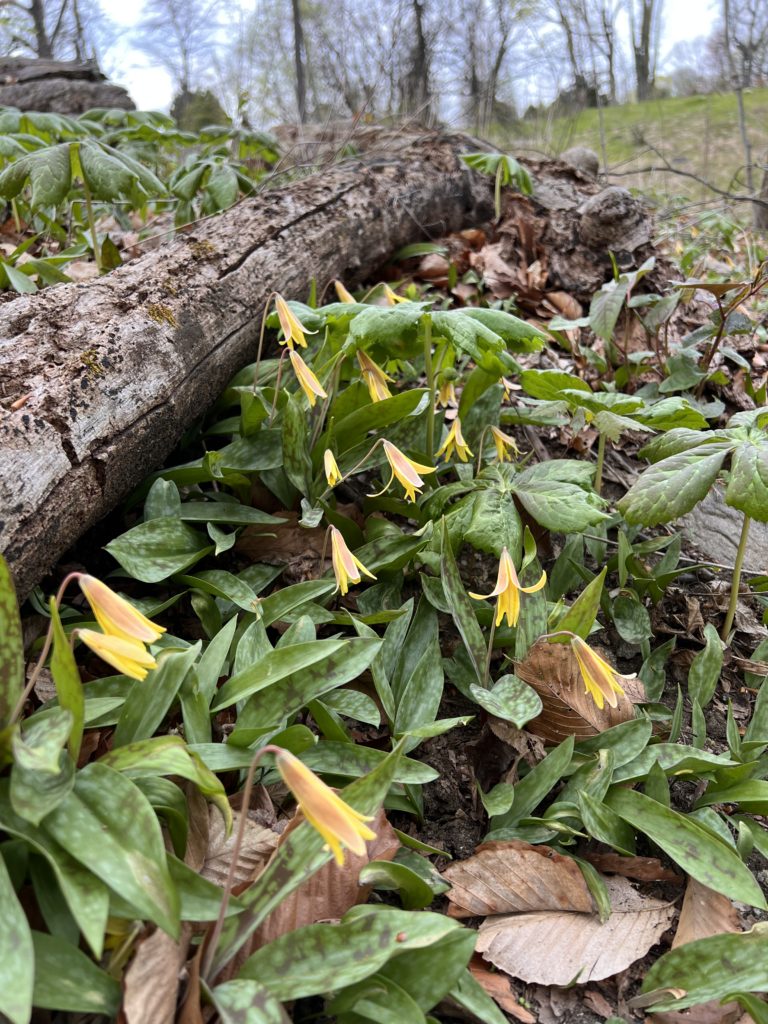
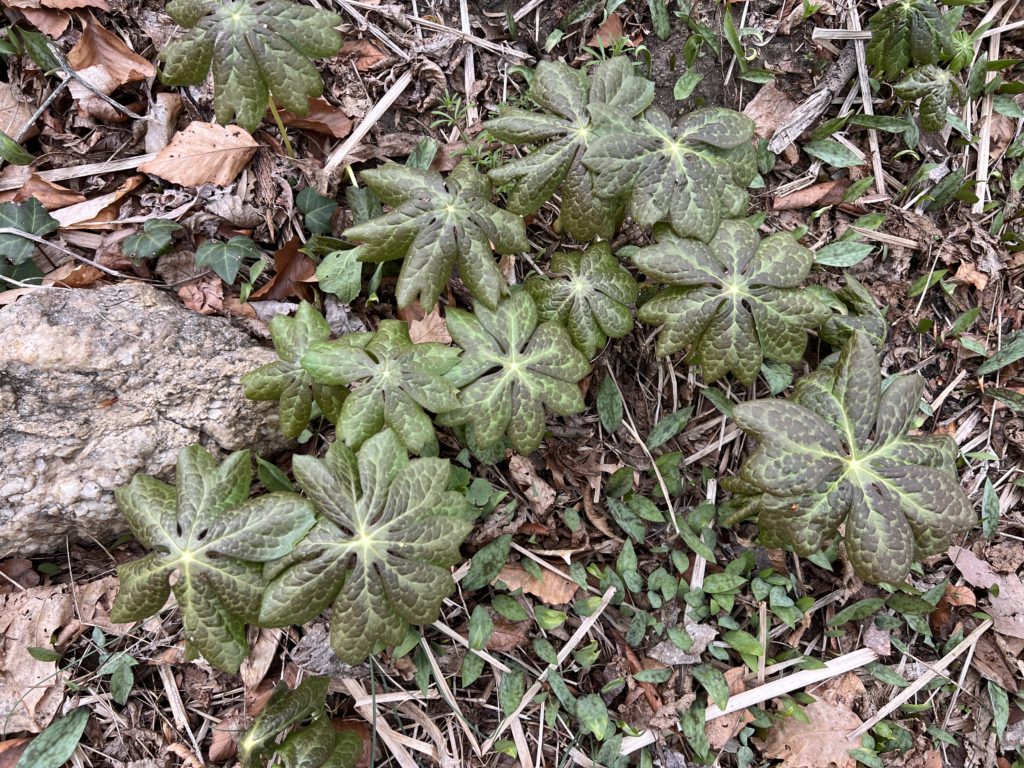
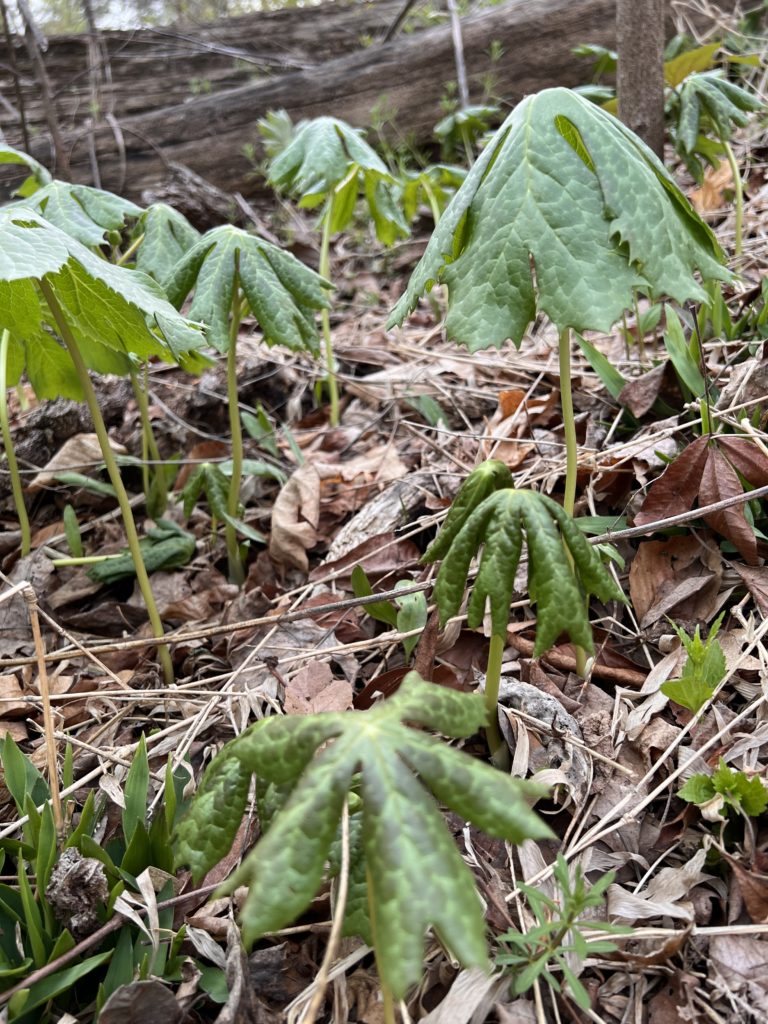
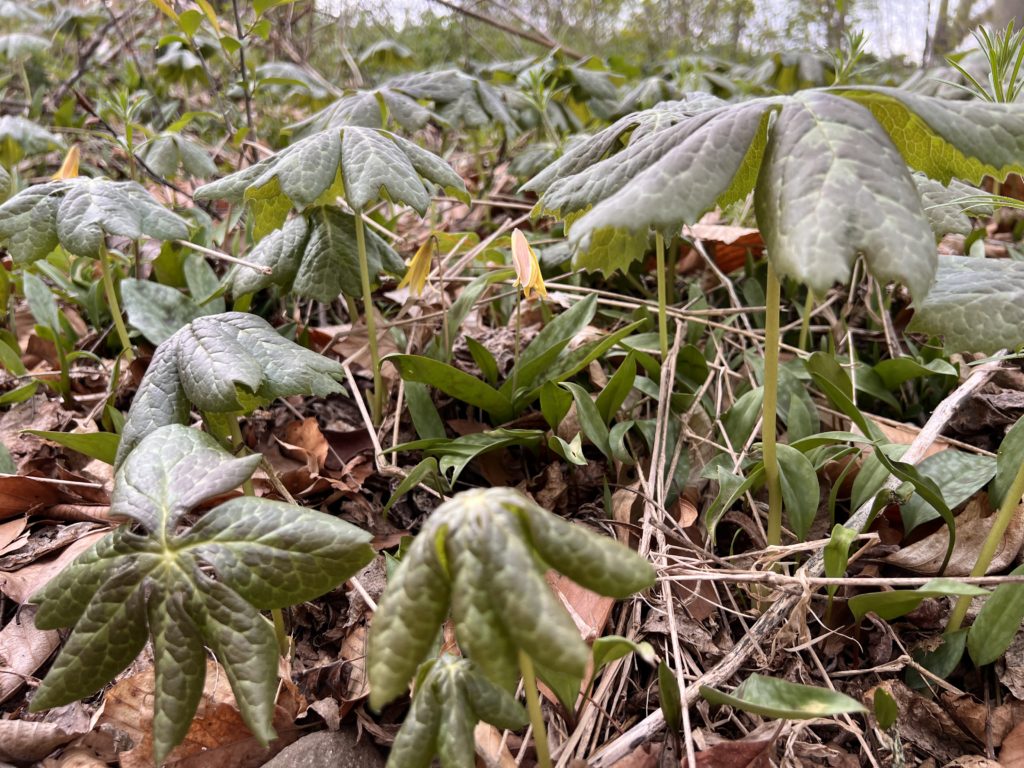
THE IPOD TOUCH WAS SET UP TO VIEW THE BLUEBELL PATCH IN THE SIDE GARDEN ADJACENT TO MORRIS PARK. THE BLUEBELLS GREW AND BLOOMED, WENT TO SEED AND DESCENDED BACK INTO THE EARTH AS THE Â COLUMBINES AND GERANIUMS ROSE TO PROMINENCE. WATCH THIS ALL PLAY ITSELF OUT IN HIGH SPEED MOTION WHERE Â TWO MONTH’S TIME HAS BEEN COMPRESSED INTO 3 MINUTES!
As the video reaches its last minute, pay attention to the lower right hand area, where you will see the Jack-In-The -Pulpit rise out of the Earth from its bulb in a rapid fashion and spread its leaves and bloom in a quickened pace compared to the other plants. Interesting how bulbs grow in relation to non-bulbous plants. The Ostrich ferns are also interesting to watch unfurl and rise up. Yes, one of them was removed and transplanted. At the very end of the video a Clematis vine is swinging itself into the picture, looking for something to grab onto.
The original intention of the video was to document the rise and blooming of the Bluebells (Mertensia virginica). After they lost their flowers, the scene was unfolding in such an interesting manner that we decided to let the camera keep rolling. Other plants that are featured in the video that you can keep an eye out for are Wild Ginger, (Asarum canadense) Lonicera sempervirens, The Coral honeysuckle and Mayapple, (Podophyllum peltatum).
For those interested in the process, we used the O-Snap App and had the Ipod take a picture every twenty minutes for the first 40 days and then every two hours after that. The night pictures were deleted because they distracted from the story of the plant’s progression and continuity of the video.
Spring 2013 has reached its final hours as of this writing. It seems as if the transition from Spring into Summer gets lost in the lush green world.  The violent storms that rage across the Midwest, and grass and trees growing with the utmost vigor are all the  makings of a late spring. This season of Spring offers such a wide variety of weather conditions, colors and skies that it leads to confusion about it still being winter or all of a sudden summertime. This one season most notably has no on-off switch. It can be totally winter on its early days and totally summer in its later days, but this season is still Spring and we would be cheating ourselves out of that Spring feeling if we fail to get it into perspective through it all.
After the Equinox of late June, is when Spring officially ends, and on both sides of this moment are the transitional signs.
Spring is over when the Mayapples flop over leaving their ripe fruit on the ground to be consumed by Box Turtles. Spring is over when the last degree of bright green freshness in the leaves of trees is turned over into a deeper green maturity…The fruits of Jack-in-The Pulpit begin to mature into bright red clusters….. The last flowers of the Columbine finally wither away…. Â The last of the Bloodroot seeds has been dispersed by the ants, and some of the leaves begin to show signs of age, some with holes and yellowed edges.
The  invasive Garlic Mustard begins to turn purple and the seedpods harden and become brittle.
Spring being over has so many signs, surely everyone can think of something that changes, often a plant in the yard, or an insect or bird sighting. In this period, knowing that Spring is over for you becomes your own personal ending and the beginning of the transition into Summer.
For us it was the flopped-over, yellowed Mayapples in the Core forests of Morris Park that signaled the end of Spring, ones we saw as we busied ourselves trying to pull out and bag as much Garlic Mustard as possible, before it is too late. (When the seeds mature, they ‘pop’ out and spread if we touch the plant, making this invasive problem worsen)
For you, dear readers, please let us know what your End-Of-Spring moment is!
And now, please do ooh and awe at the bountiful plants and flowers in our Spring Garden! Here they are:
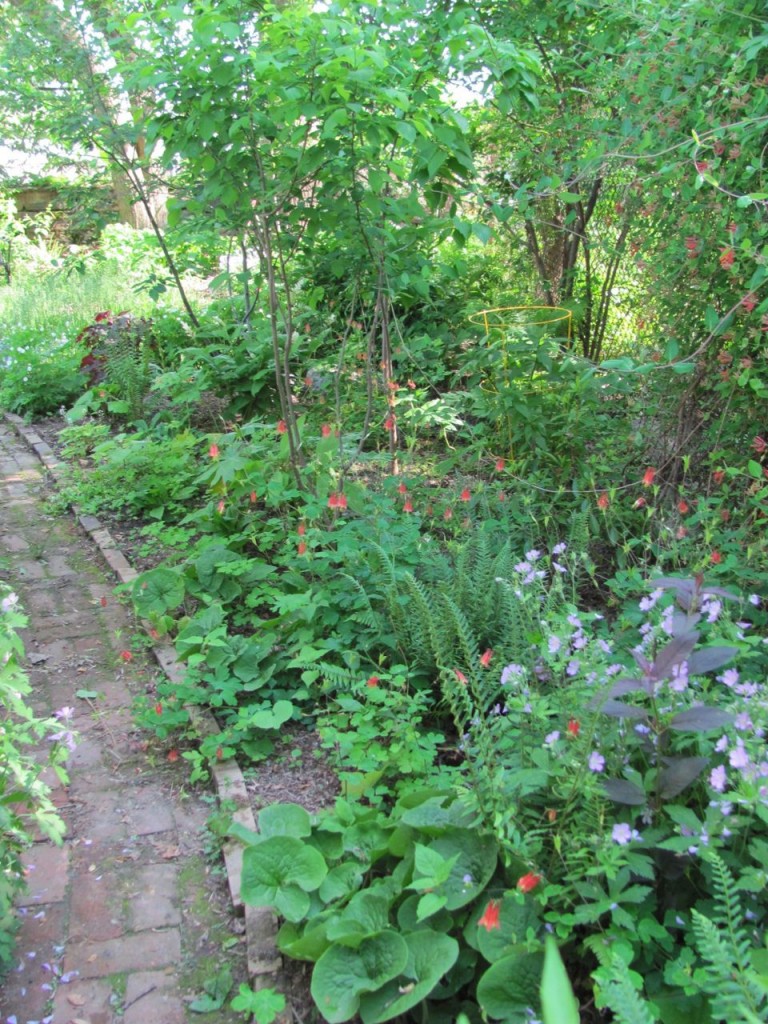
This mid to late Spring scene in our garden, pictured above is blooming Columbine, Coral Honeysuckle and Wild Geranium with Christmas fern and Wild Ginger.
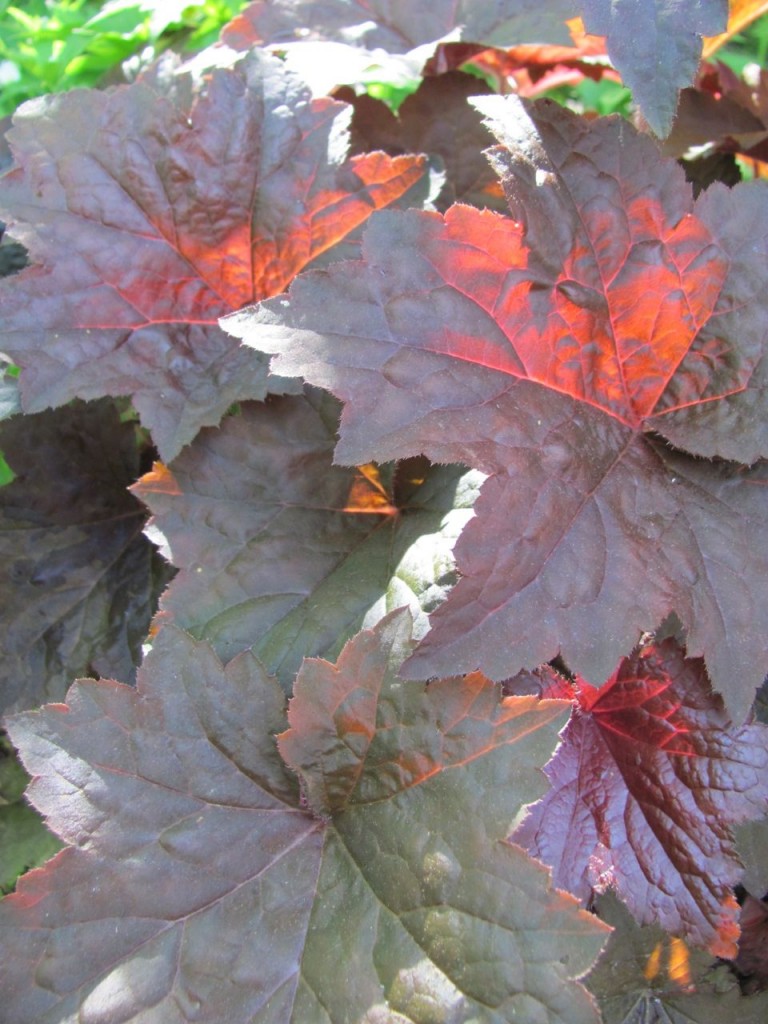
Above, the Heuchera americana has beautiful red leaves and creates a nice contrast to the very green backdrop.
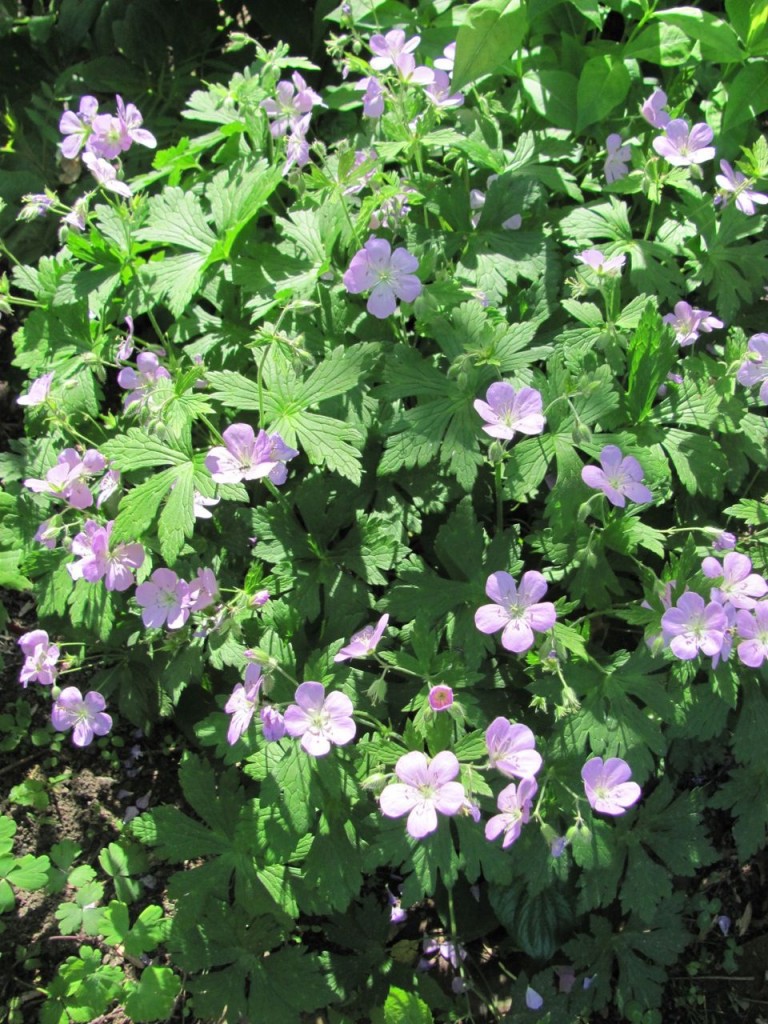
This Wild Geranium (Geranium maculatum) is a favorite Mid to Late Spring garden plant. Enjoy these amazing purple blooms. This specific plant is just growing on its own, having reseeded itself naturally, being that it grows naturally in the adjacent Morris Park. The specimens in Morris Park almost never bloom or go to seed because of excessive deer browsing. The seeds from this plant are saved and dispersed into the park in an effort to maintain the local population of this species and stave off extirpation, which is the extinction of a local population.
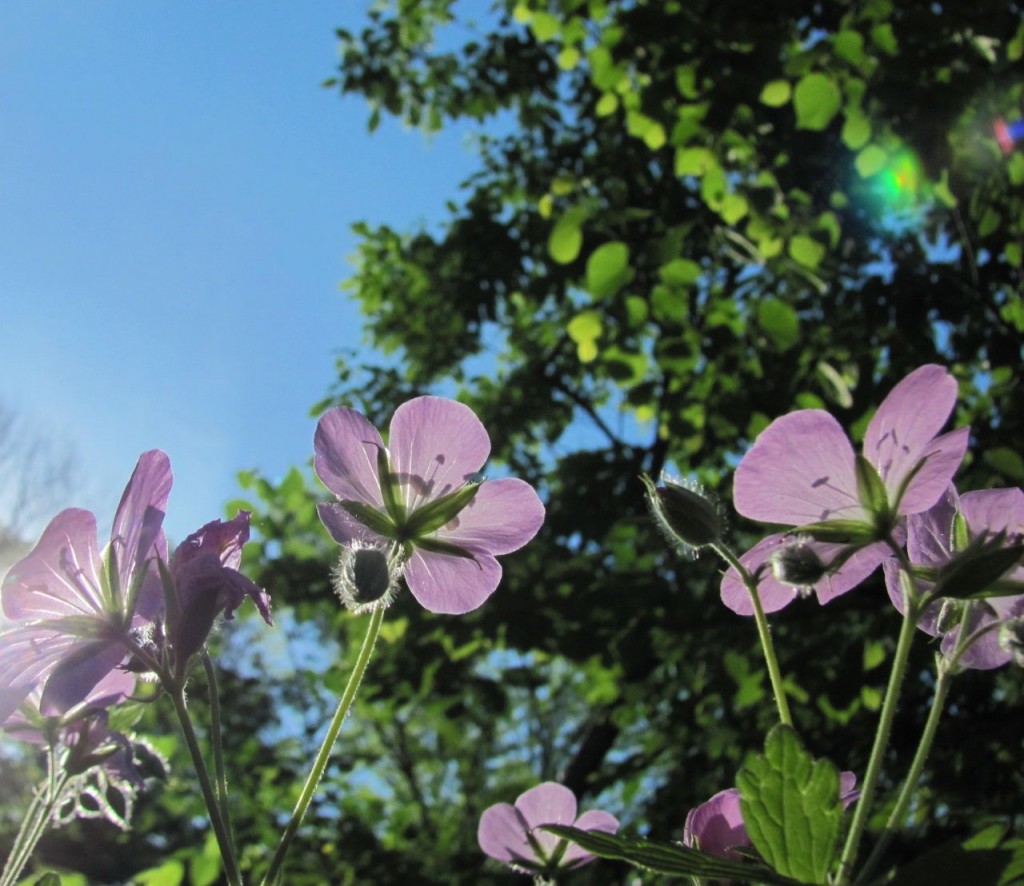
Above, the Wild Geranium blooming away in that distinctive Spring sun.
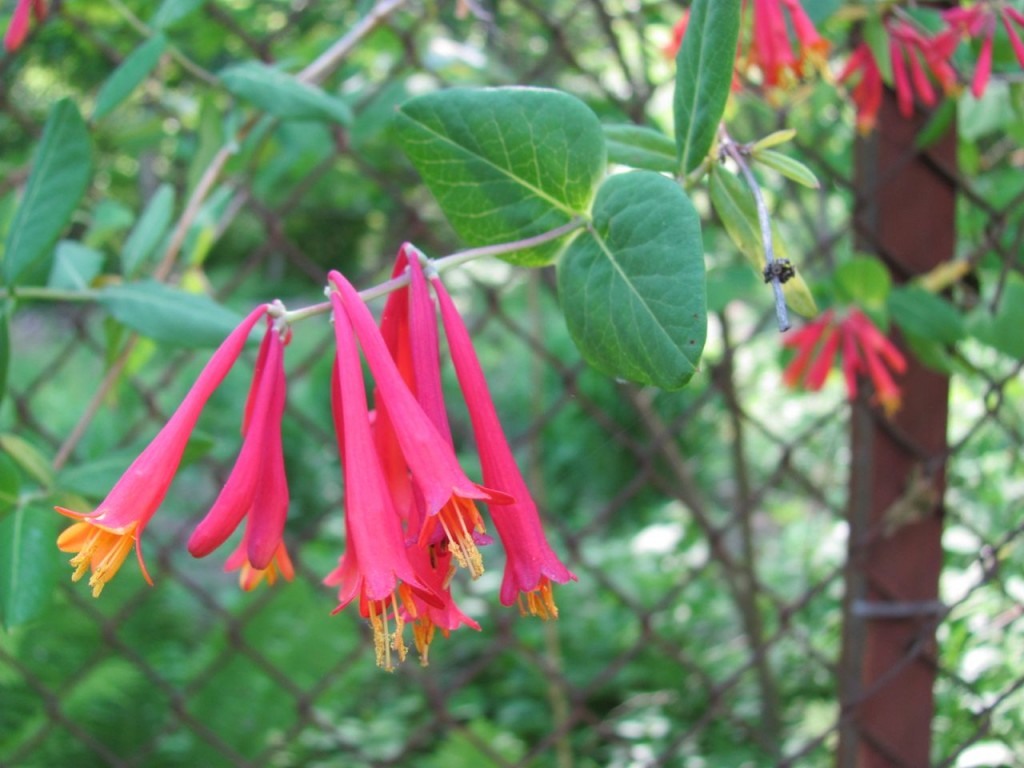
Above, the Coral Honeysuckle, the Lonicera sempervirens, blooming away. Â This is an indigenous vine which is very useful for attracting Hummingbirds. It will cover your fence or arbor and bloom away for months on end, transcending the seasonal changes. This plant is our main Hummingbird attraction. We do not have a Hummingbird feeder, so we rely on a variety of other plants as well, especially as Spring transitions into Summer.
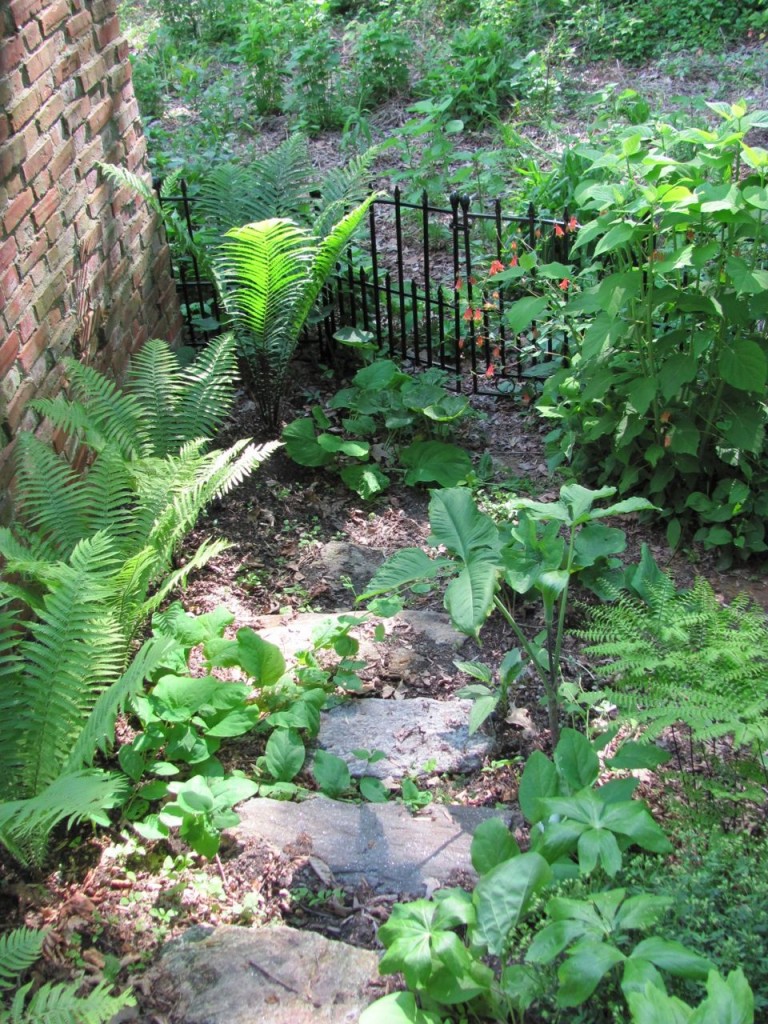
From left to right: Ostrich fern, Blooming Columbine (also a hummingbird plant), Jack -in-the-Pulpit, Maidenhair Fern and Mayapples on the right hand foreground.
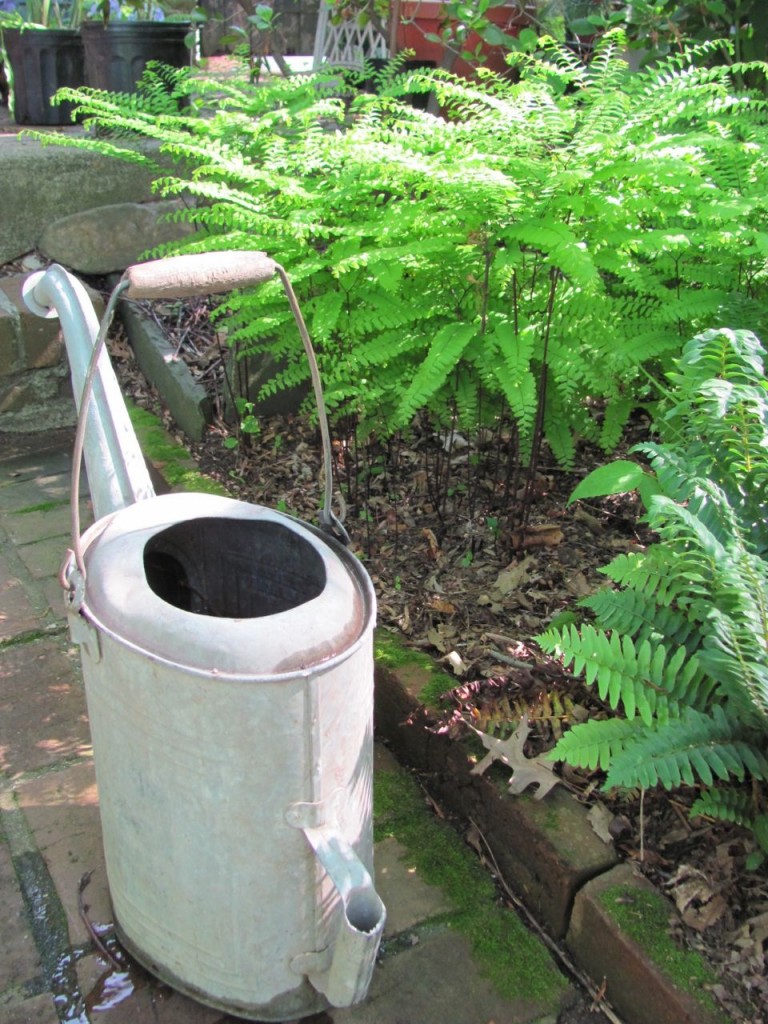
Above, The Maidenhair fern grows very well in the rowhouse urban garden. It likes the protection of cliffs. This watering can got very little use this Spring 2013, except for whatever plants were transplanted or nursery purchased, such as a bunch of Cardinal Flower we bought for the Hummingbirds.
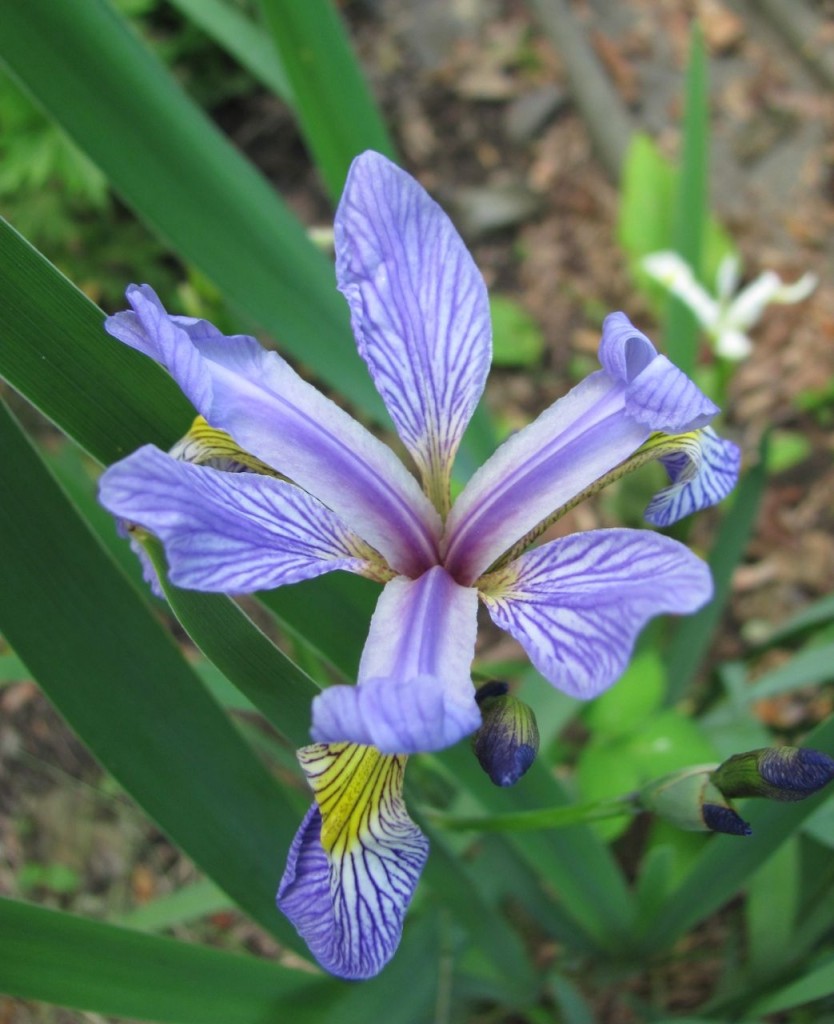
The native Irises, we proudly display for you.
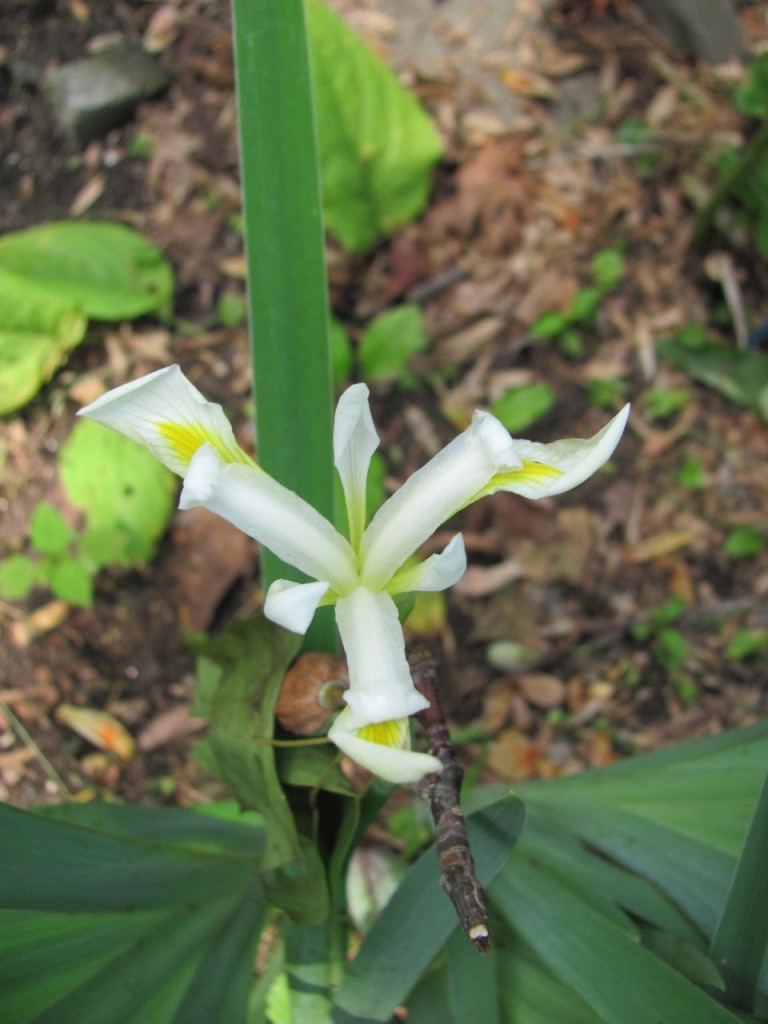
So, there you have it, Spring is now over with, at least for the most part. Perhaps we will see more bits of Spring-like behavior in the upcoming weather or plant and wildlife behavior as the days proceed beyond the Equinox.
Enjoy the transition!
